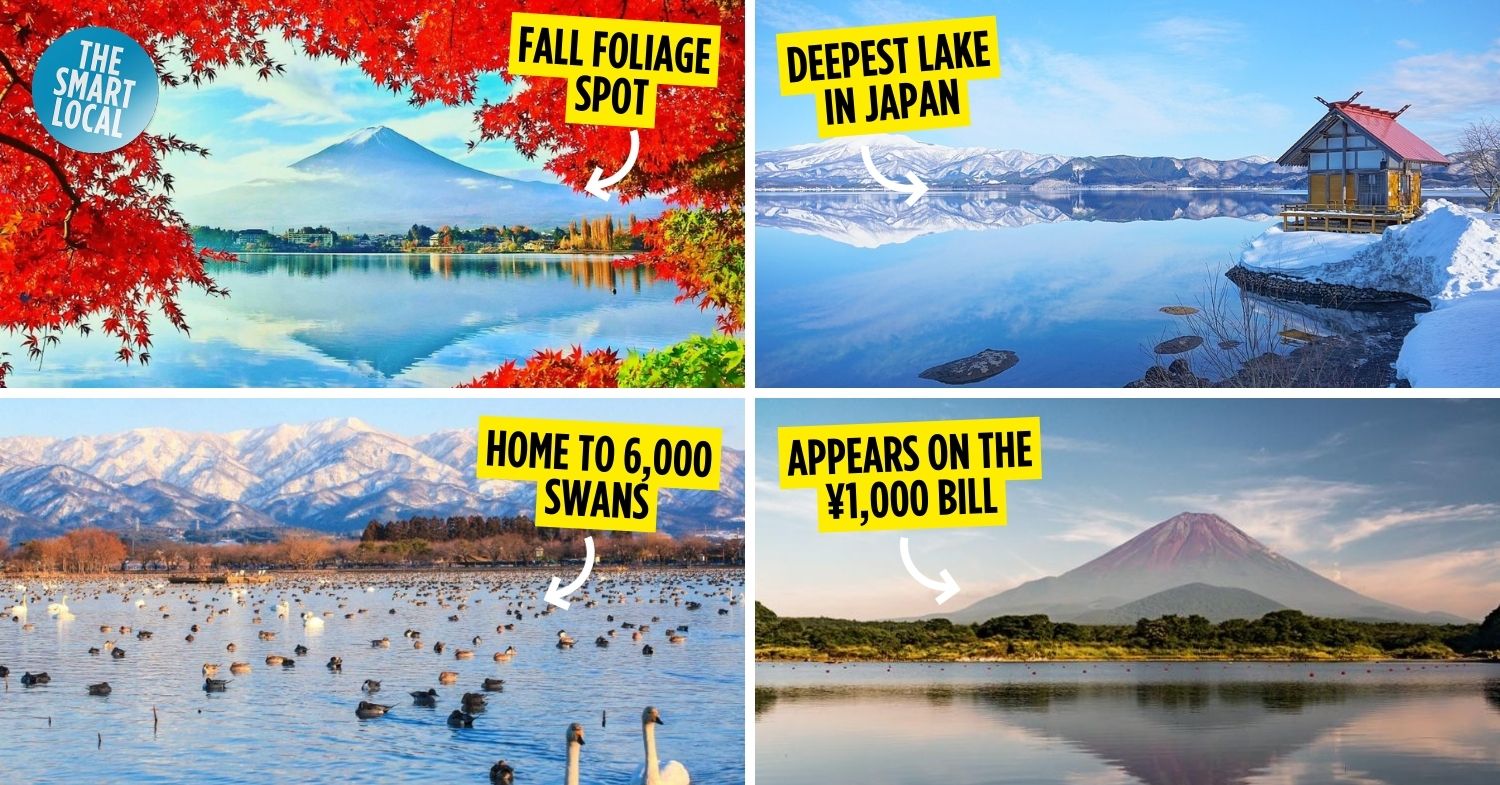musicLakes in Japan
Boasting numerous sightseeing spots across 47 prefectures, Japan is a popular destination for tourists seeking peace of mind from the rat race of life. Lakes in Japan in particular serve as one of the best remedies for the tired soul – they effortlessly entrance you into a state of inner peace with their tranquil waters and the grandeur of their vast horizons.
Without further ado, here are the 10 most beautiful lakes in Japan to heal and satisfy your soul.
– Fuji Five Lakes –
When going on a lake-hopping trip in Japan, you can’t afford to miss out on the famous Fuji Five Lakes (富士五湖) – Lake Shōji, Lake Motosu, Lake Yamanaka, Lake Kawaguchi, and Lake Sai.
These 5 water bodies were naturally formed from Mount Fuji’s past volcanic eruptions, where the lava flow solidified and trapped separate pools of water in close vicinity of Japan’s representative peak.
1. Lake Shōji
Among the Fuji Five Lakes, Lake Shōji (精進湖) is the smallest with a shore length of 6.8km. Nevertheless, visitors get to see a one-of-a-kind phenomenon, where a smaller mountain appears to overlap the base of Mount Fuji when viewed from a certain angle.
Resembling Mount Fuji watching over the smaller mountain like its parent, the scene is termed “Kodaki Fuji” (子抱き富士), which translates to “child-cradling Mount Fuji”.
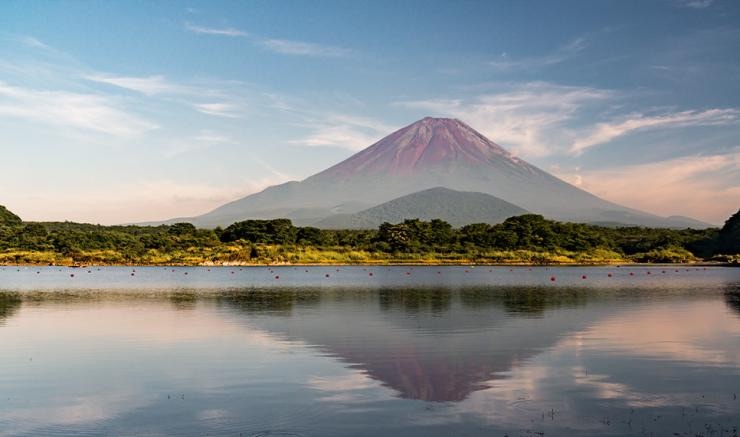
Image credit: Yamanashi Tourism Organization
The mysterious Mount Fuji Junior is none other than Mount Ōmuro (大室山), a volcano that became dormant approximately 4,000 years ago. Today, it’s covered in grass and is scalable through the Mount Ōmuro cable chair lift.
Round trips for the cable chair lift are priced at ¥700 (~USD5.05) for passengers aged 12 and above, and ¥350 (~USD2.52) for children between 4-12 years old.

Image adapted from: ITO City, @tac_instagram
Besides enjoying a panoramic view of Mount Fuji, visitors to Mount Ōmuro’s peak can also take part in a mini archery session at the crater.
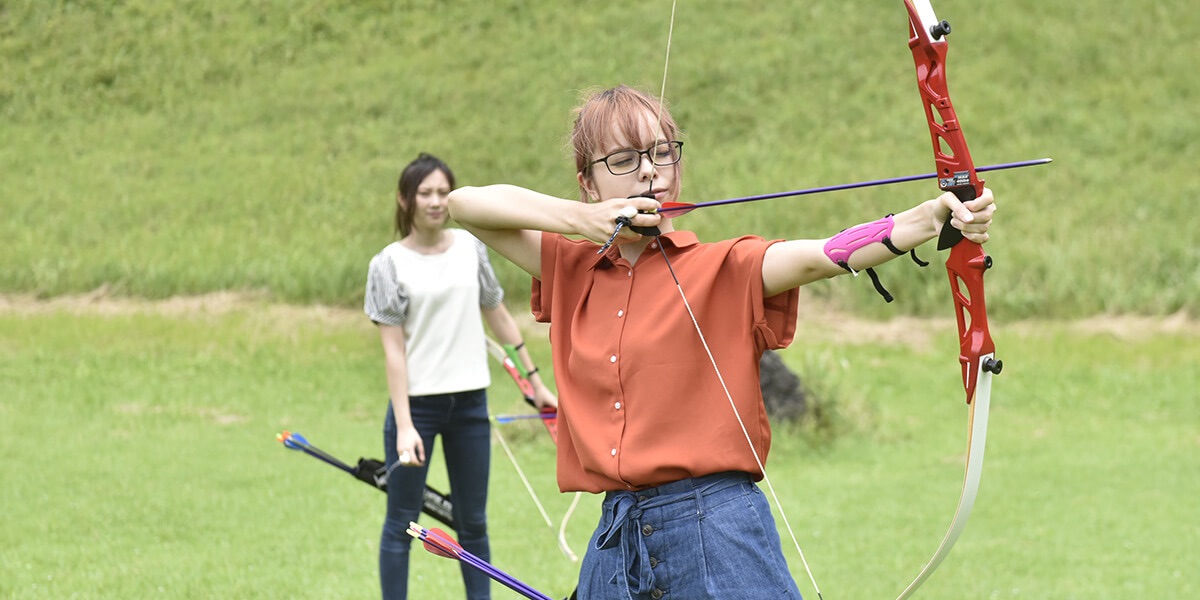
Image credit: 伊豆/伊東/大室山
Participants must be at least 12 years old. An archery session costs ¥500 (~USD3.60) per pax, and you’ll have to rent a set of bow and 5 arrows (¥1,000, ~USD7.20).
Interested visitors are to sign up for the session at the souvenir shop atop Mount Ōmuro on the day itself.
Address: Fujikawaguchiko Town, Minamitsuru District, 401-0336 Yamanashi
2. Lake Motosu
Another member of the Fuji Five Lakes, Lake Motosu (本栖湖) is the deepest with a depth of 121.6m.
As the base of Mount Fuji is mostly covered when viewed from Lake Motosu, the mountain appears steeper than it actually is. Consequently, on clear sunny days when Mount Fuji is perfectly reflected on the surface of Lake Motosu, you can see a symmetrical diamond-shaped Mount Fuji outline forming on the horizon.
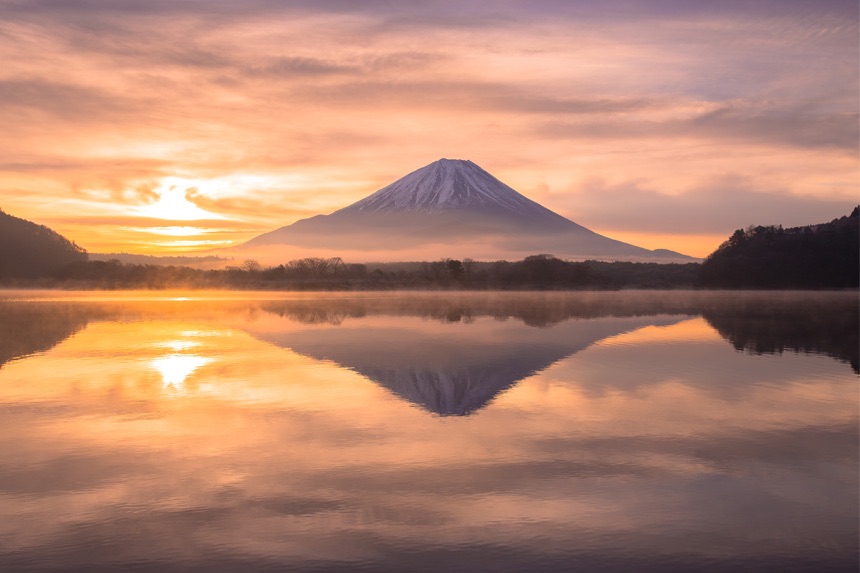
Image credit: ANA
This wondrous phenomenon is – quite literally – termed “Diamond Fuji”. This magnificent event is even immortalised on ¥1,000 bills, so fret not if you don’t manage to catch the view in person.
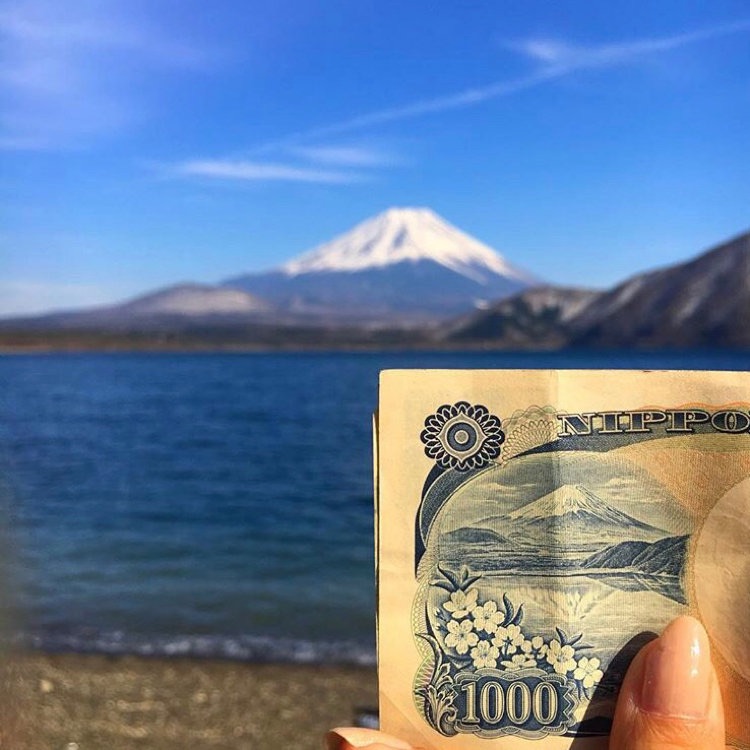
Image credit: ミノリ
Address: Fujikawaguchiko Town, Minamitsuru District, 401-0337 Yamanashi
3. Lake Yamanaka
An alternative way to hunt for the Diamond Fuji view is drop by Lake Yamanaka (山中湖), the largest among the Fuji Five Lakes and also the closest to Mount Fuji.
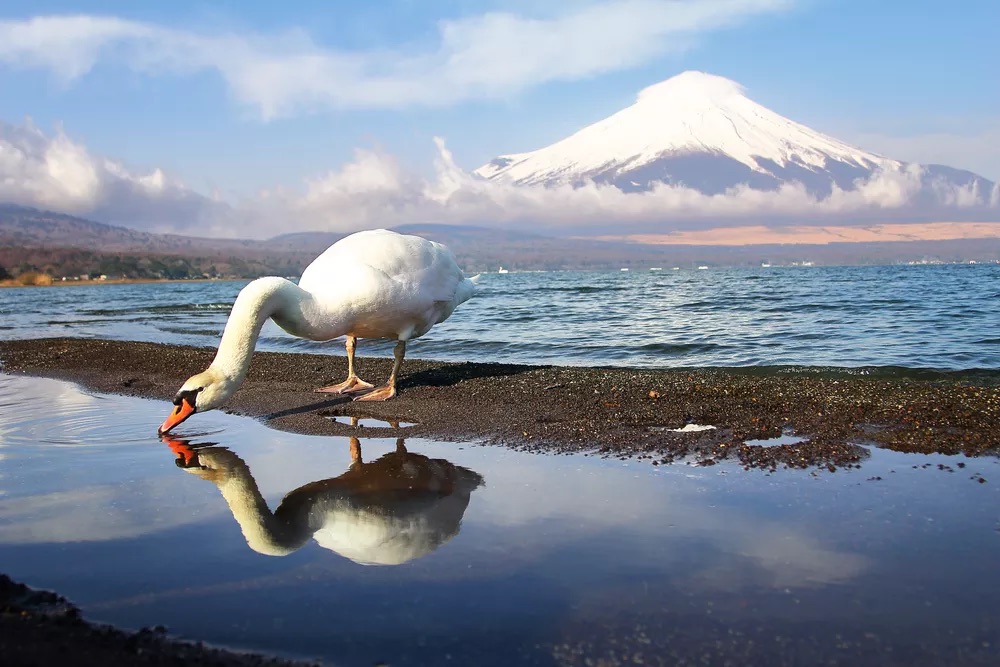
Image credit: Japan Rail Pass Now (Australia)
Lake Yamanaka offers a variety of recreational activities in its vicinity, which explains why many Japanese people have a vacation villa in the area. For instance, visitors are free to cycle along the 14m-long cycling path around the lake, clocking health points for both the body and mind.
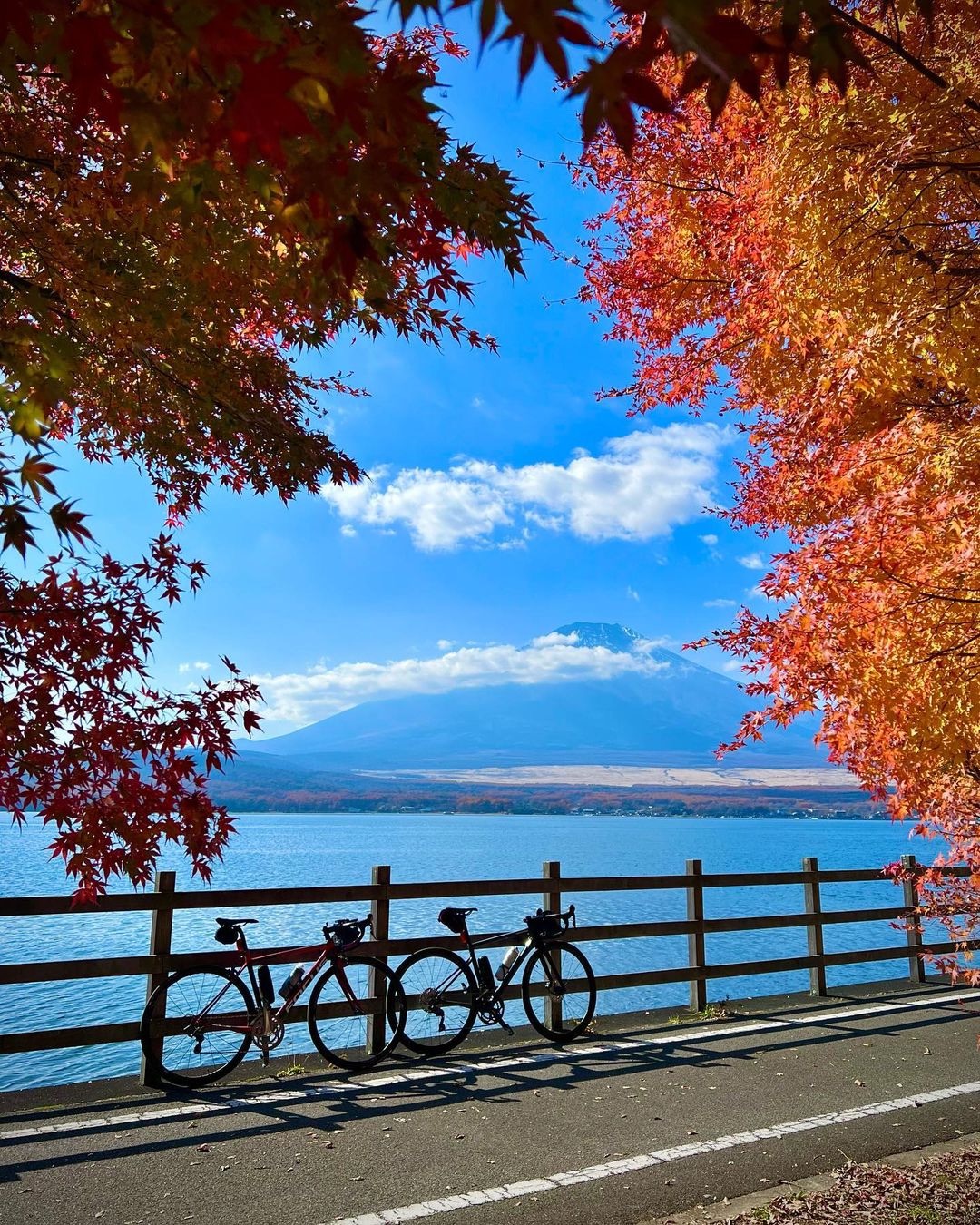
Image credit: @seiwat
Alternatively, tour Lake Yamanaka by going on a relaxing 25-minute Swan Lake boat ride. Tickets go for ¥1,000 (~USD7.20) for children aged 12 and above, and ¥500 (~USD3.60) for children aged 4-11.
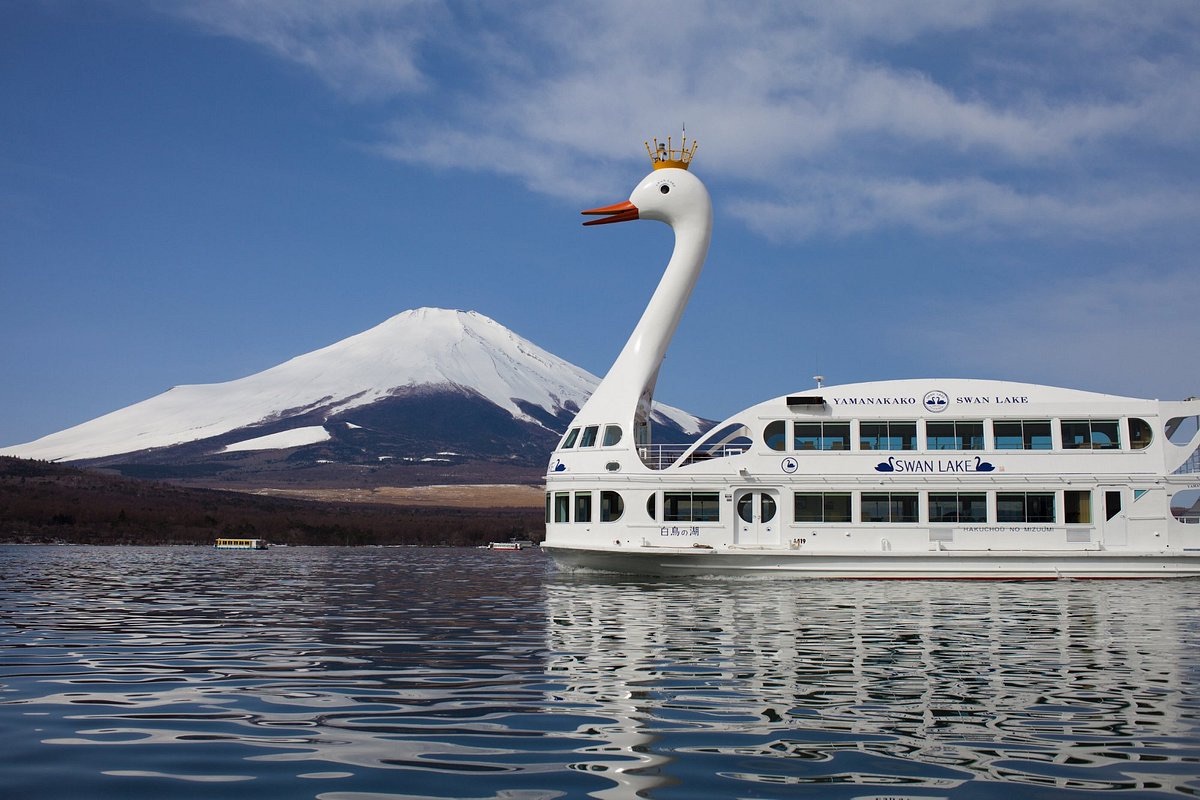
Image credit: Tripadvisor
Lake Yamanaka was recently featured in Japanese idol group J01’s performance video for Born To Be Wild.

Image credit: @official_jo1
The members were filmed dancing on a raised platform at Lake Yamanaka, with Mount Fuji in the background.
Watch the music video here:
Video credit: J01
Address: 506-296 Hirano, Minamitsuru District, 401-0502 Yamanashi
4. Lake Kawaguchi
Situated an 8-minute drive from Kawaguchiko Station, Lake Kawaguchi (河口湖) is one of the more accessible lakes among the Fuji Five Lakes.
This lake is known for its perfect surface reflection of Mount Fuji amid abundant tree leaves on clear days, akin to a scene right out of a painting.
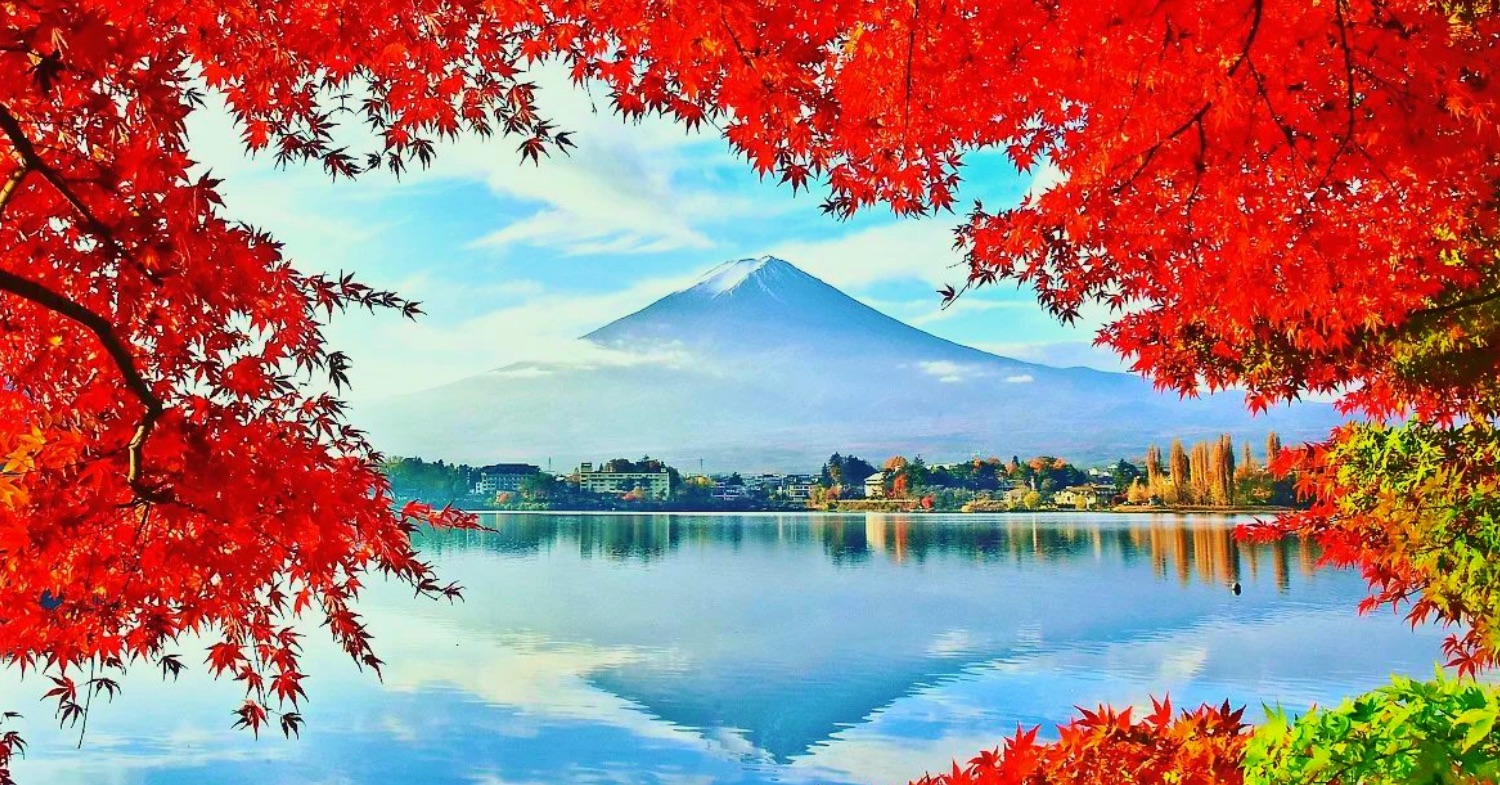
Image adapted from: @fujikawaguchikotourism
Visitors to Lake Kawaguchi should stop by the nearby Music Forest Museum, which is famous for its large display of self-playing instruments.
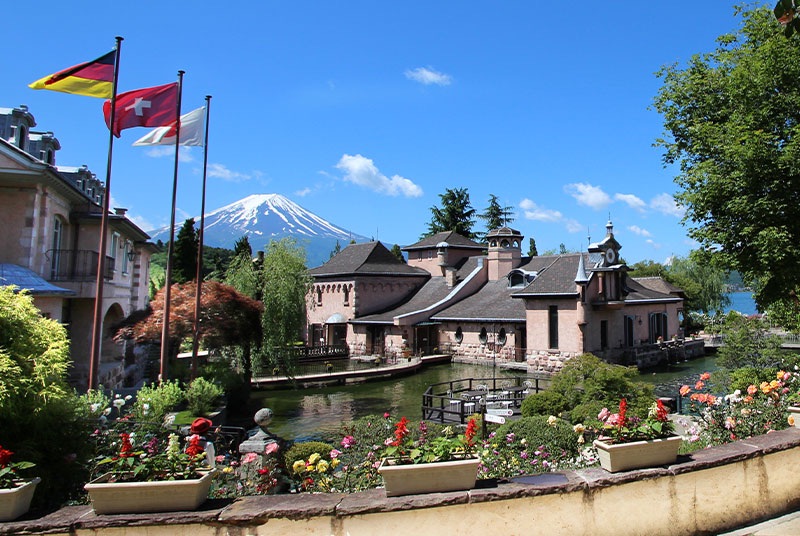
Image credit: Kawaguchiko Music and Forest Museum
An example of a self-playing instrument is the Philharmonic Orchestraon, which was supposed to be installed aboard the Titanic. Assembly of the instrument was completed only after the ship had set sail, unfortunately, though that may have been a blessing in disguise.

Image credit: Kawaguchiko Music and Forest Museum
Furthermore, the Music Forest Museum also contains a garden with 720 different types of roses for your viewing pleasure.
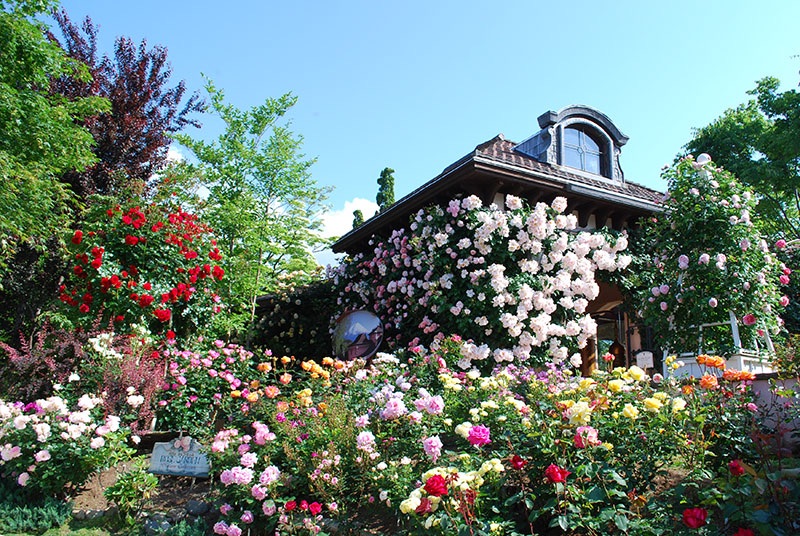
Image credit: Kawaguchiko Music and Forest Museum
Cap off your trip to Lake Kawaguchi and its vicinity by attending the occasional performances held at the Music Forest Museum. Stay updated on the performance schedule via the official Music Forest Museum website.
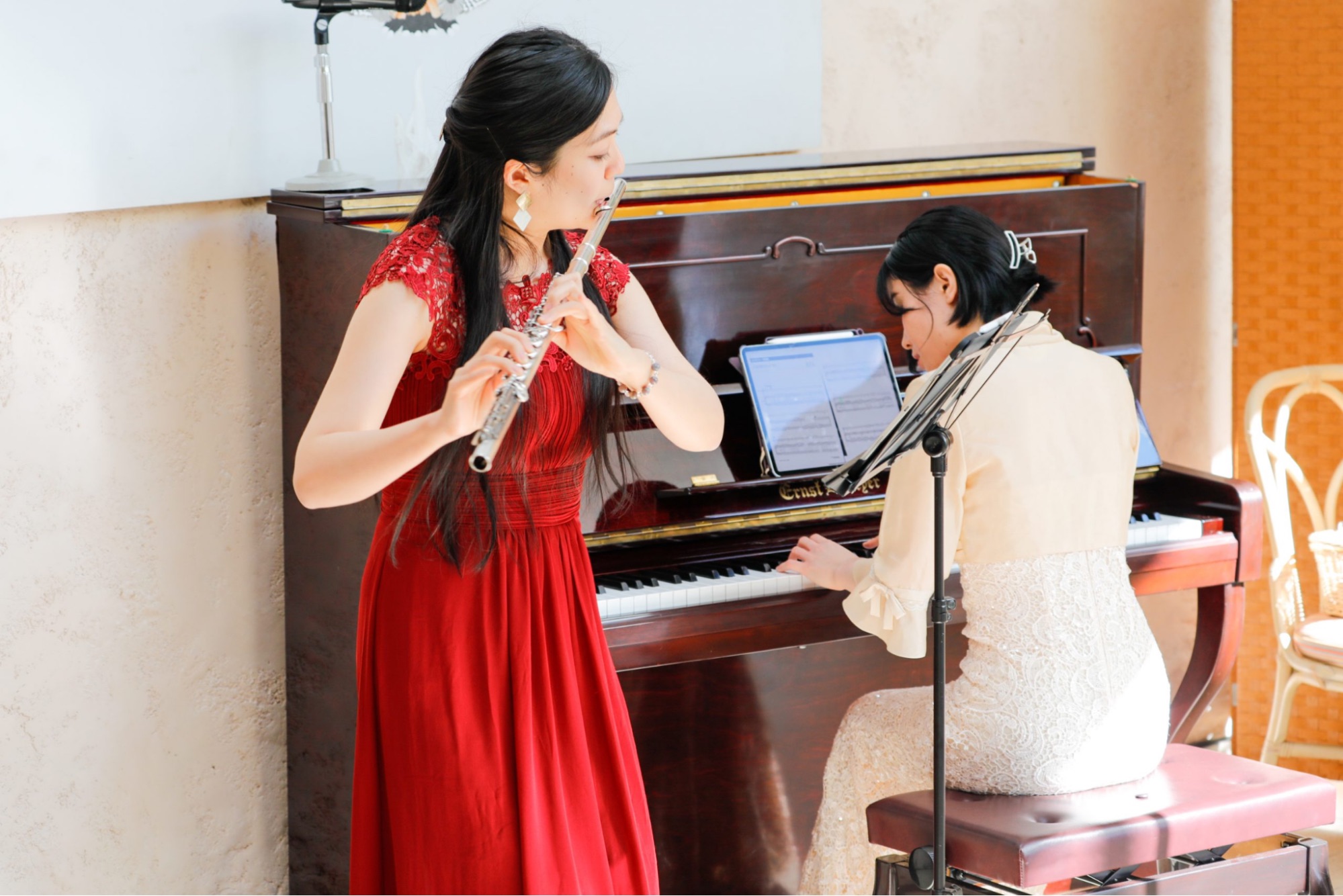
Image credit: Kawaguchiko Music and Forest Museum
Lake Kawaguchi
Address: 3641-1 Funatsu, Fujikawaguchiko, Minamitsuru District, 401-0301 Yamanashi
Music Forest Museum
Admission: ¥1,800 (~USD12.97)/adults | ¥1,300 (~USD9.36)/university and high school students | ¥1,000 (~USD7.20)/middle and elementary school students
Address: 3077-20 Kawaguchi, Fujikawaguchiko, Minamitsuru District, 401-0304 Yamanashi
Opening hours: Wed-Mon 10am-5pm (Last admission at 4pm)
Contact: 0555-20-4111 | Music Forest Museum website
5. Lake Sai
Lake Sai (西湖), the last of the Fuji Five Lakes, is surrounded by lush greenery and plenty of wildlife. Visitors typically enjoy the view of Mount Fuji while canoeing or fishing on the lake.
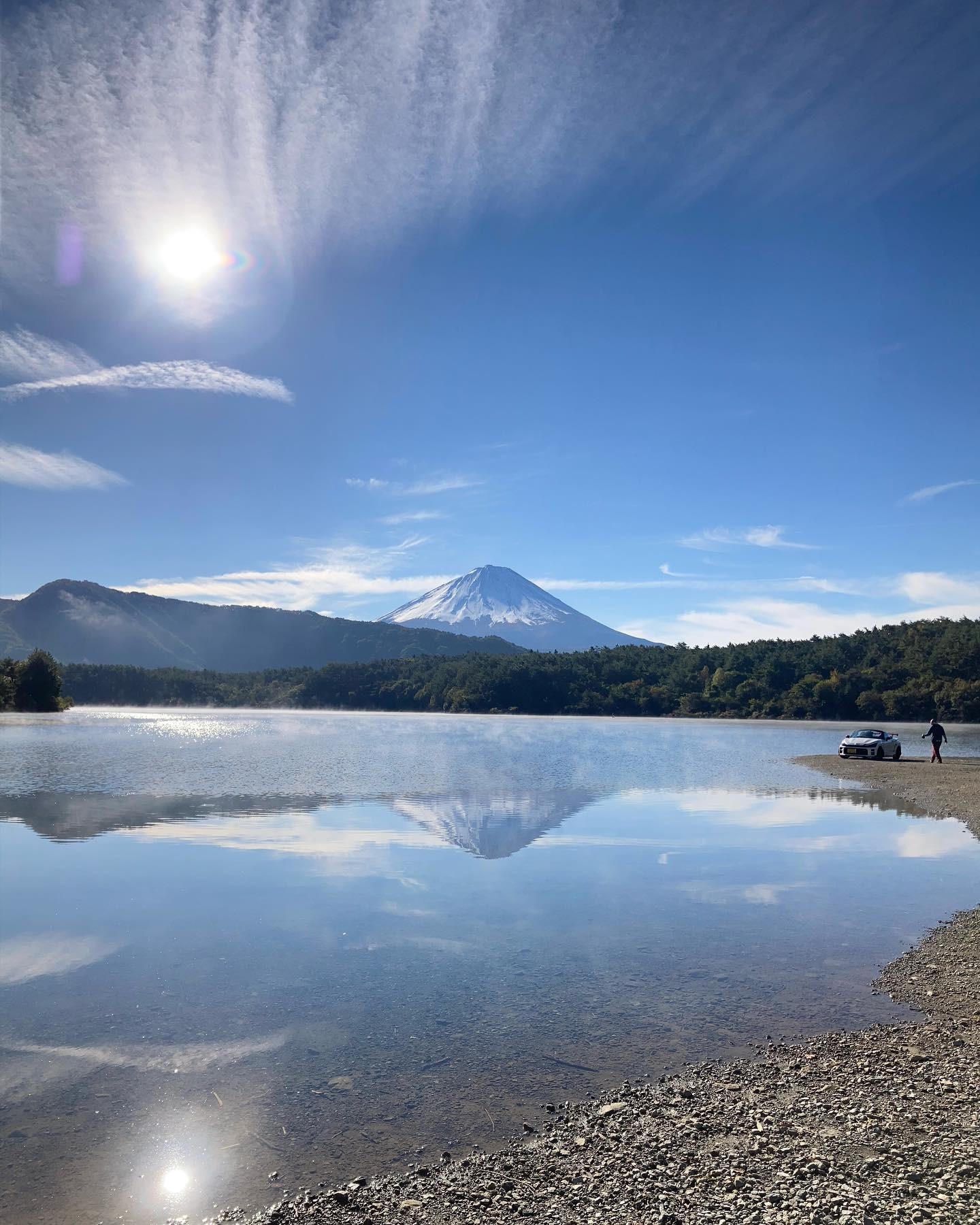
Image credit: @saiko.weekend.house
Over at the nearby Lake Sai Wild Bird Forest Park, locals hold the Lake Sai Ice Tree Festival (西湖樹氷祭り) annually from end January to early February. Free for all to join, the winter festival features frost-covered trees that are illuminated at night.
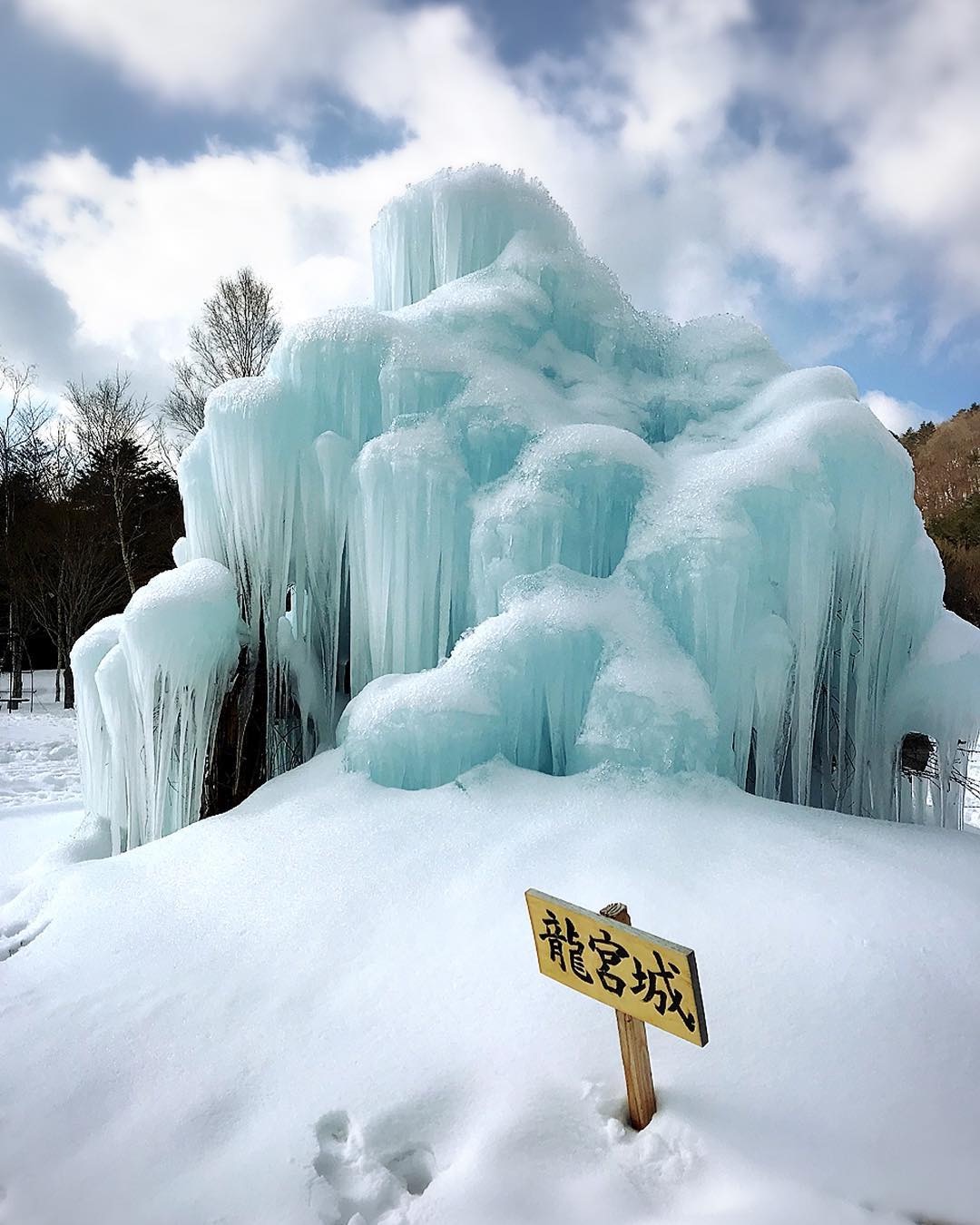
Image credit: @namacocorin
During the Lake Sai Ice Tree Festival, locals set up food stalls selling items such as the Himemasu sea trout, a delicious fish that’s fairly uncommon in the Japanese market.
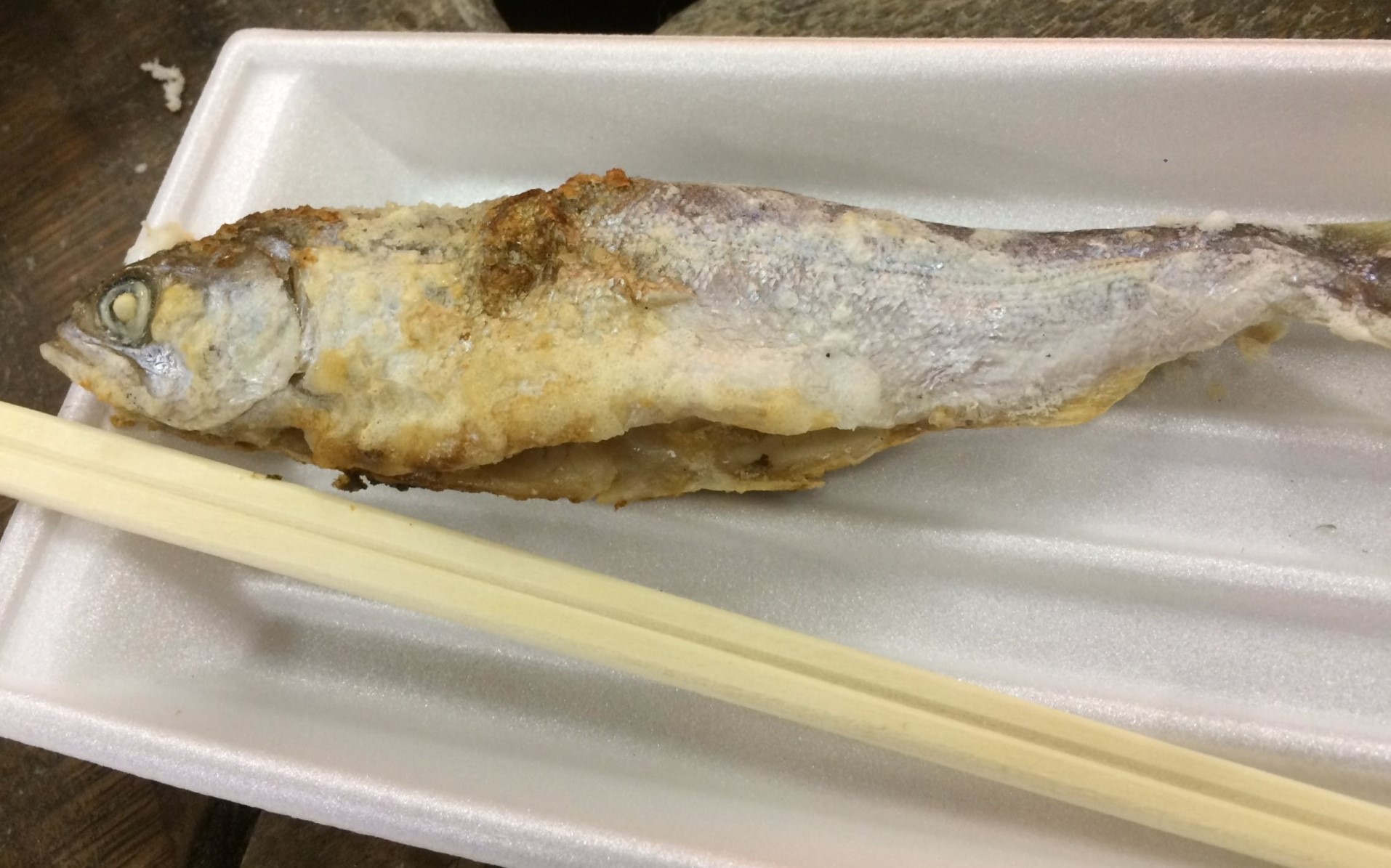
Grilled Himemasu.
Image adapted from: @mgnxx
As the festival reaches its climax at night, fireworks are set off to liven the atmosphere, painting a picturesque nightscape of Lake Sai with Mount Fuji in the background.
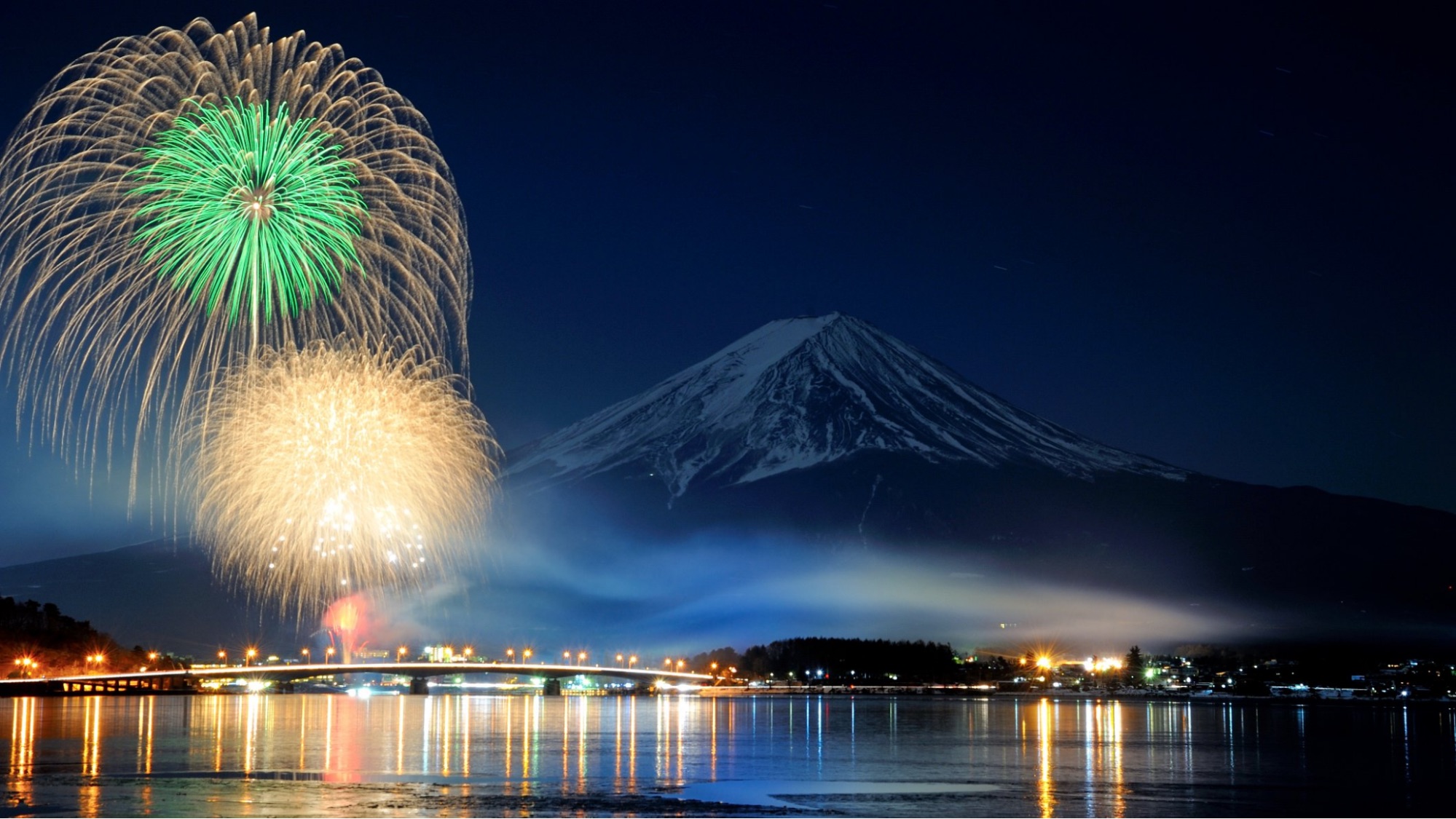
Image credit: @RYOTA2138
If you have time to spare, consider visiting the nearby Iyashi no Sato (いやしの里), a reconstructed traditional Japanese village that contains 13 thatched roof houses.
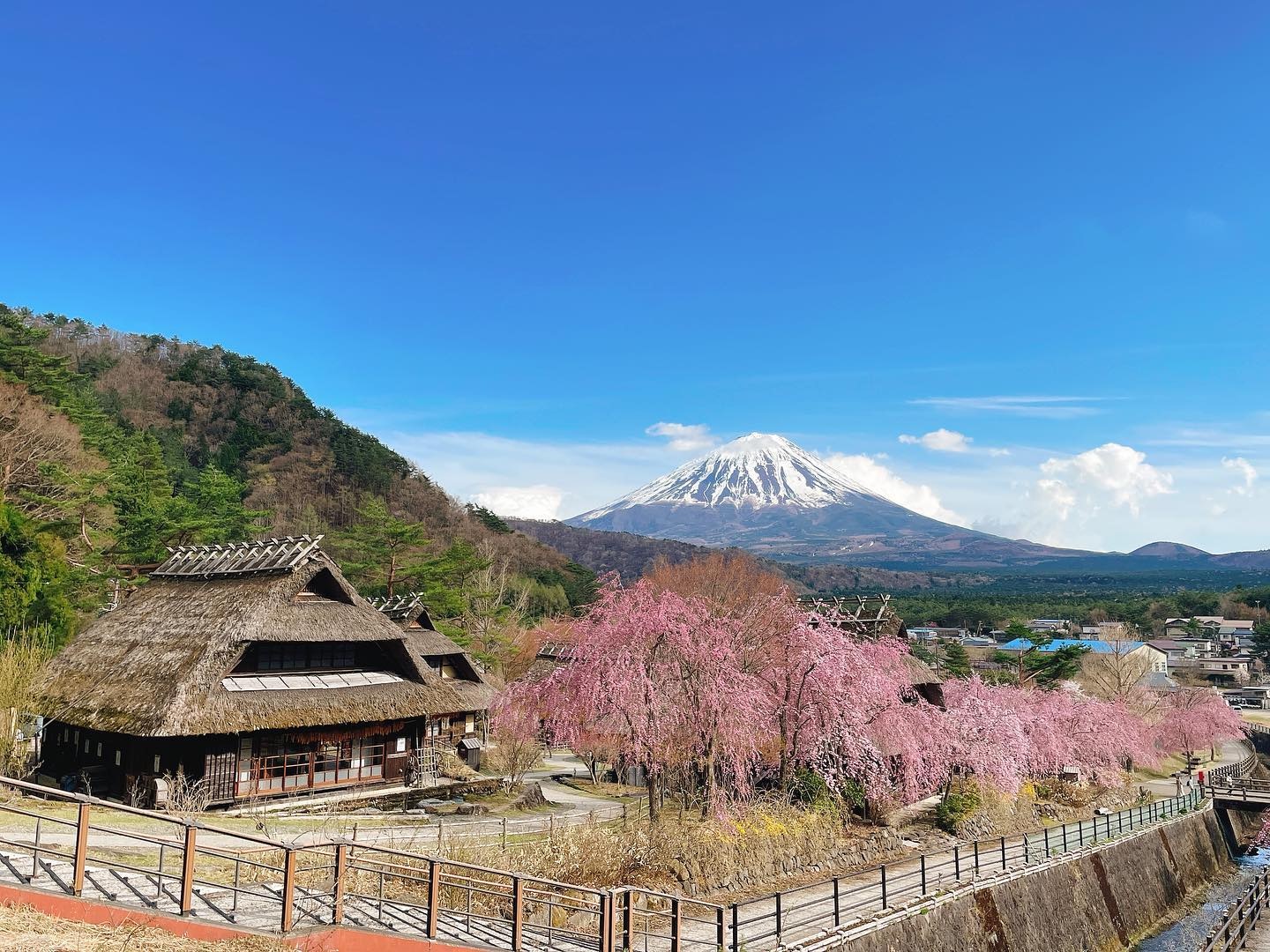
Image credit: @saiko_iyashinosato_nenba
There, you’ll get the opportunity to try on traditional Japanese clothing such as ancient Samurai armour and partake in traditional Japanese desserts, including dango.
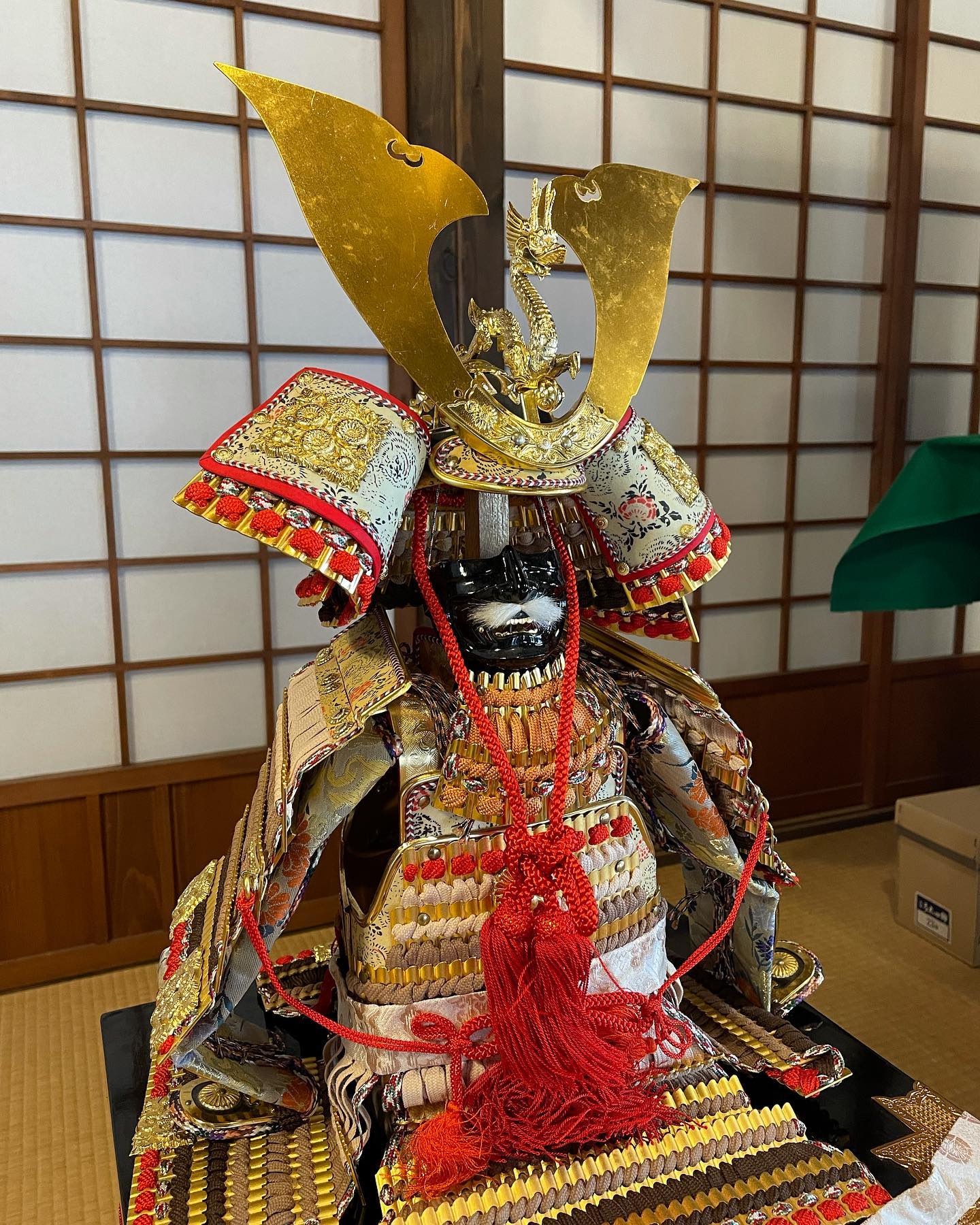
Image credit: @saiko_iyashinosato_nenba
Address: Fujikawaguchiko, Minamitsuru District, 401-0332 Yamanashi
– Others –
6. Goshikinuma
Goshikinuma (五色沼) is an unusual entry on our list as it isn’t technically a single lake. Also known as Five Coloured Lakes, Goshikinuma houses 5 colourful lakes: Lake Bishamon, Lake Aka, Lake Midoro, Lake Tatsu, and Lake Benten.
Highlighted in up to 3 colours at once across different seasons and times of the day, the lakes of Goshikinuma get their ethereal hues from volcanic minerals in the water.
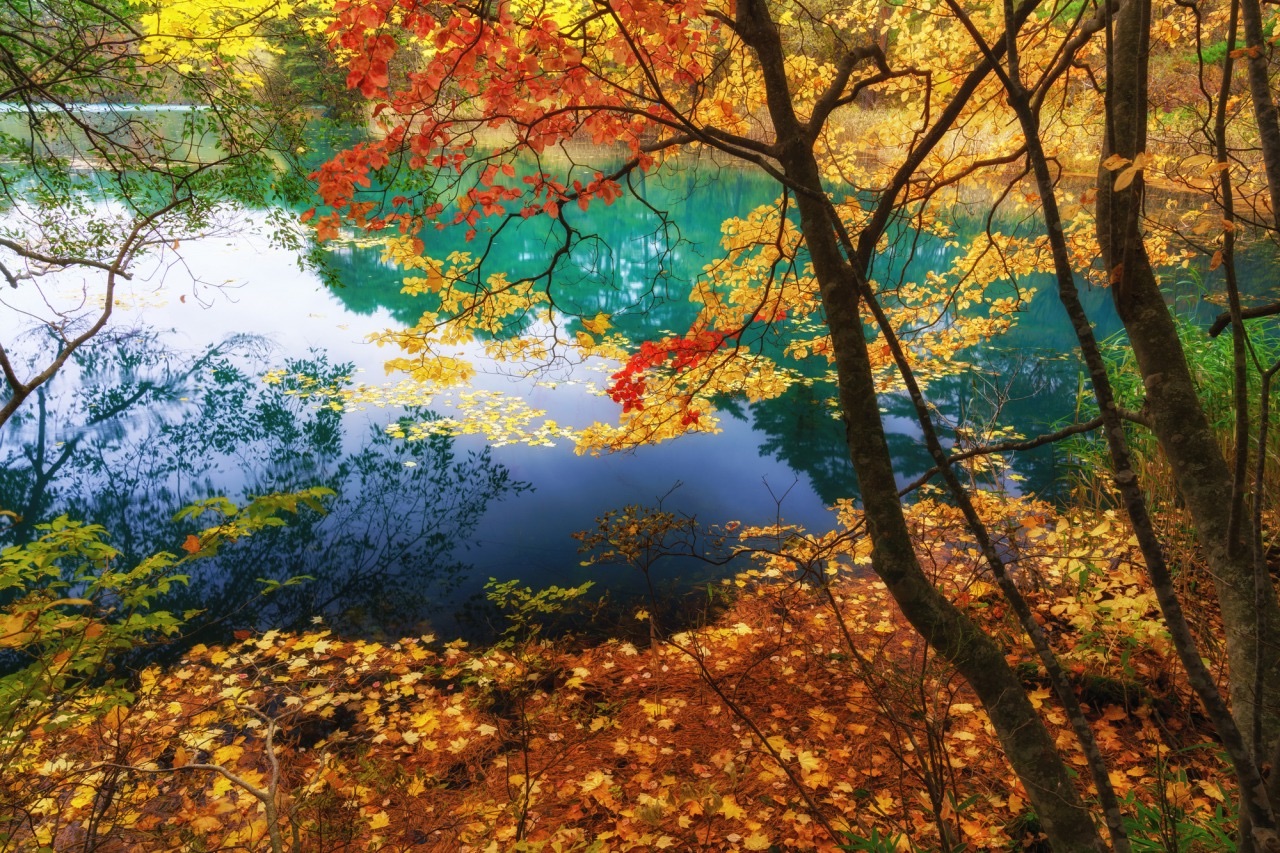
Image credit: Tohoku Tourism Promotion Organization
Though named Five Coloured Lakes, Goshikinuma actually consists of a whopping 30 different water bodies, including marshes, ponds, and lakes.
Among the Five Coloured Lakes, Lake Bishamon is a favourite destination for couples and ready-to-mingle singles due to the presence of a unique koi fish in the waters. Possessing a heart-shaped mark on its body, the fish is believed to boost the chances of a successful romantic relationship with a significant other or a crush.
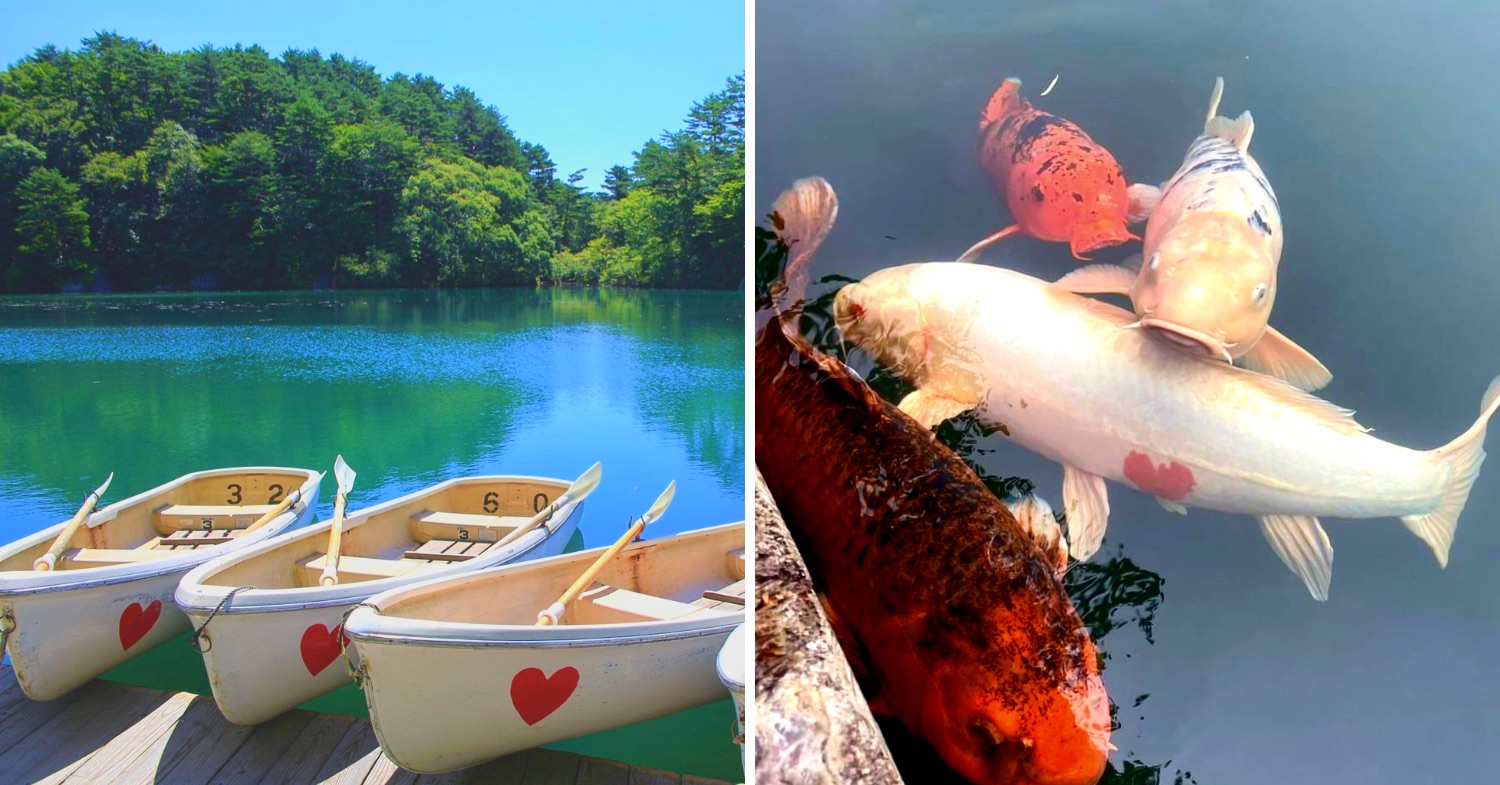
Image adapted from: @kyotomoyou and @activeresortsurabandai
However, it’s not purely the heart mark that turned the one-of-a-kind koi fish into a symbol of love. In Japanese, “koi” can mean both “koi fish” (鯉) or “love” (恋) depending on the kanji characters used. Since the unique koi fish in Lake Bishamon further bears a heart-shaped mark on its body, it’s no wonder that the locals tout it as a love luck symbol.
Visitors typically search for the fish with the heart-shaped mark either by walking along the perimeter of Lake Bishamon or by traversing the waters on a rowboat.
Address: Kengamine Hibara, Kitashiobara, Yama District, 966-0501 Fukushima
7. Lake Kinrin
Lake Kinrin (金鱗湖), where “kin” (金) means “golden” and “rin” (鱗) means “scales”, was named as such by the ancient scholar Kūsō Mōri (毛利空桑), who allegedly witnessed the reflection of golden fish scales on the lake’s surface.
Located in Oita Prefecture, Lake Kinrin is best known for its pristine waters. Owing to constant water flow from the nearby mountains, the lake waters naturally get replaced at least twice a day, leaving it constantly clear and crystalline.
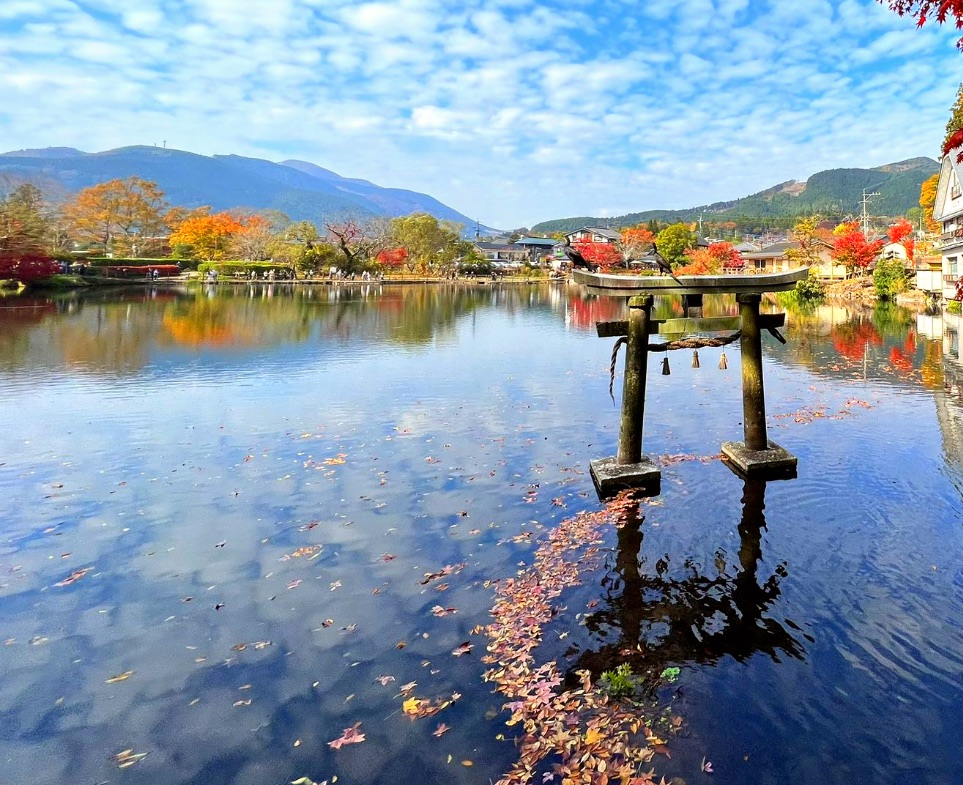
Image adapted from: @hb06_04
Near Lake Kinrin, the Yufuin (湯布院/由布院) onsen town houses various art museums, cafes, and souvenir shops that sell local products that can double as omiyage.
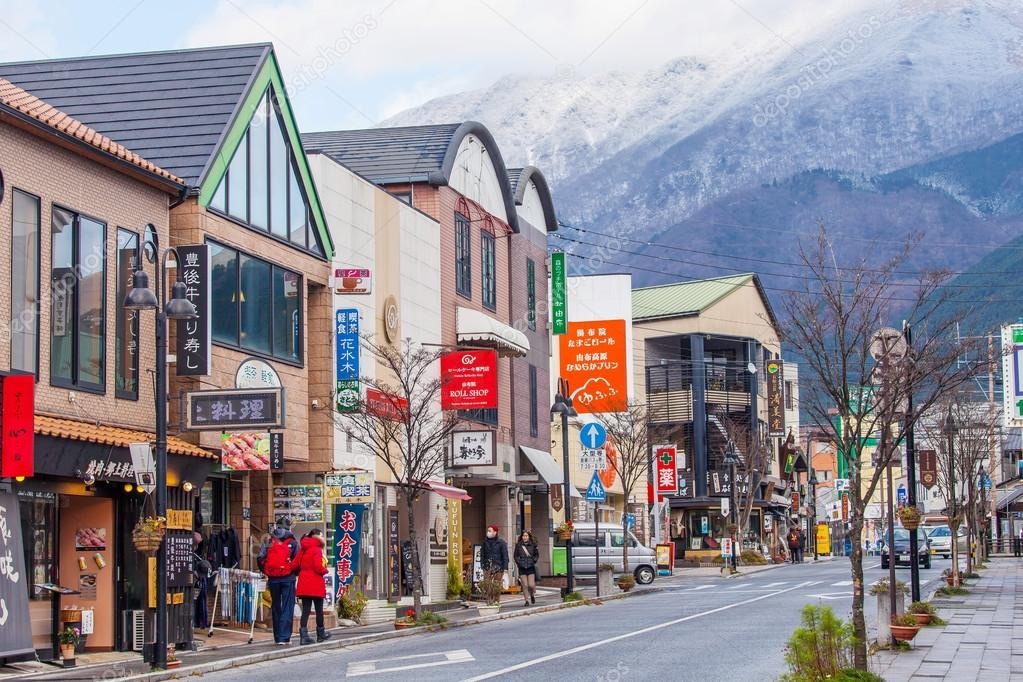 Image credit: kawing921
Image credit: kawing921
Among the numerous shops in Yufuin, Donguri no Mori is particularly hot because they sell numerous My Neighbor Totoro-themed merch, from clocks to jigsaw puzzles. The storefront is also adorned with a huge Totoro plushie and a bus stop sign.
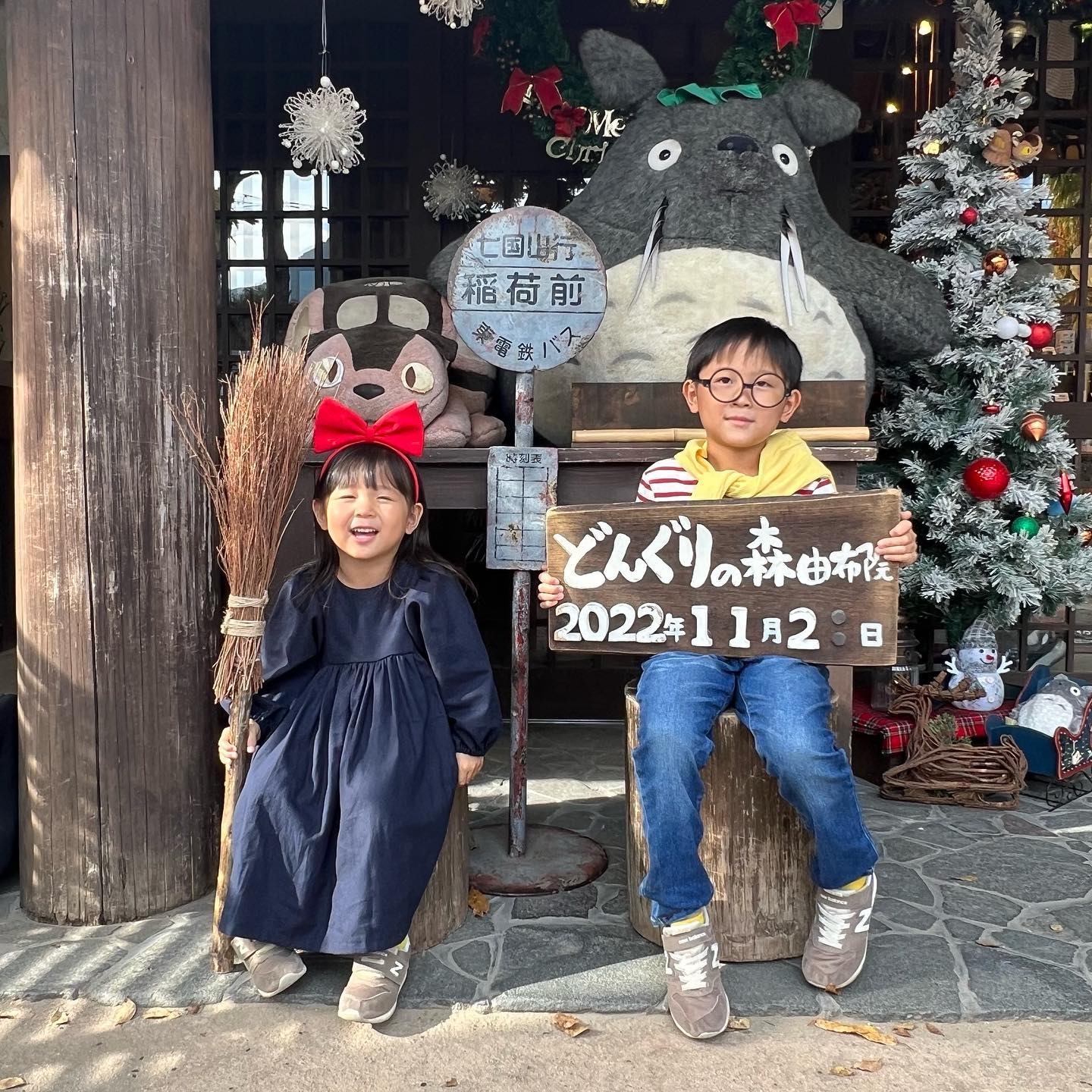
Image credit: @yufuin.dongurinomori
Address: 1561-1 Yufuincho Kawakami, Yufu, 879-5102 Oita
8. Lake Tawaza
Crowned the deepest lake in Japan, Lake Tawaza (田沢湖) reaches depths of 423.4m.
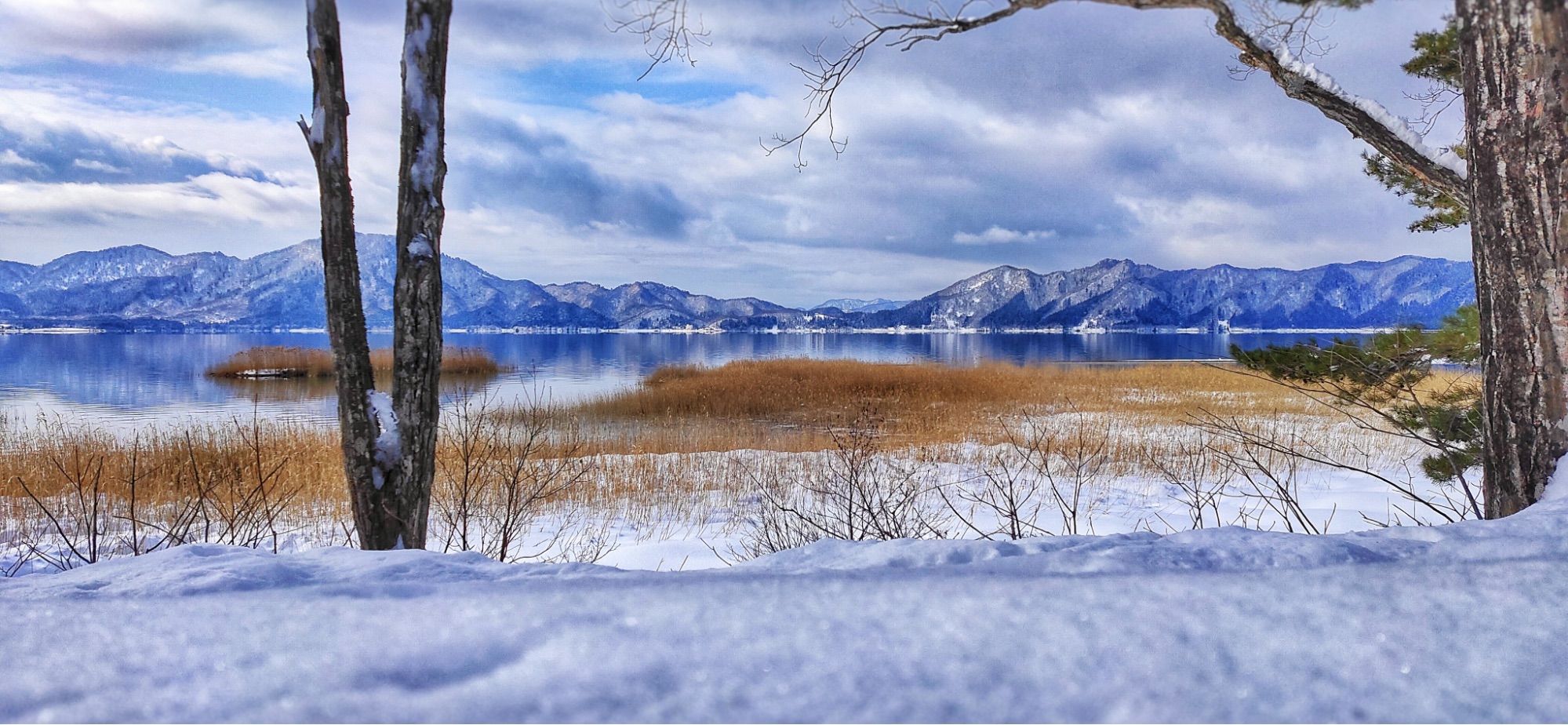
Image credit: @Akita_PokemonGo
Several shrines surround Lake Tawaza, including the famous Kansagu (漢槎宮), otherwise called Ukiki Shrine (浮木神社). Built atop Lake Tawaza, Kansagu supposedly blesses individuals in their love lives.
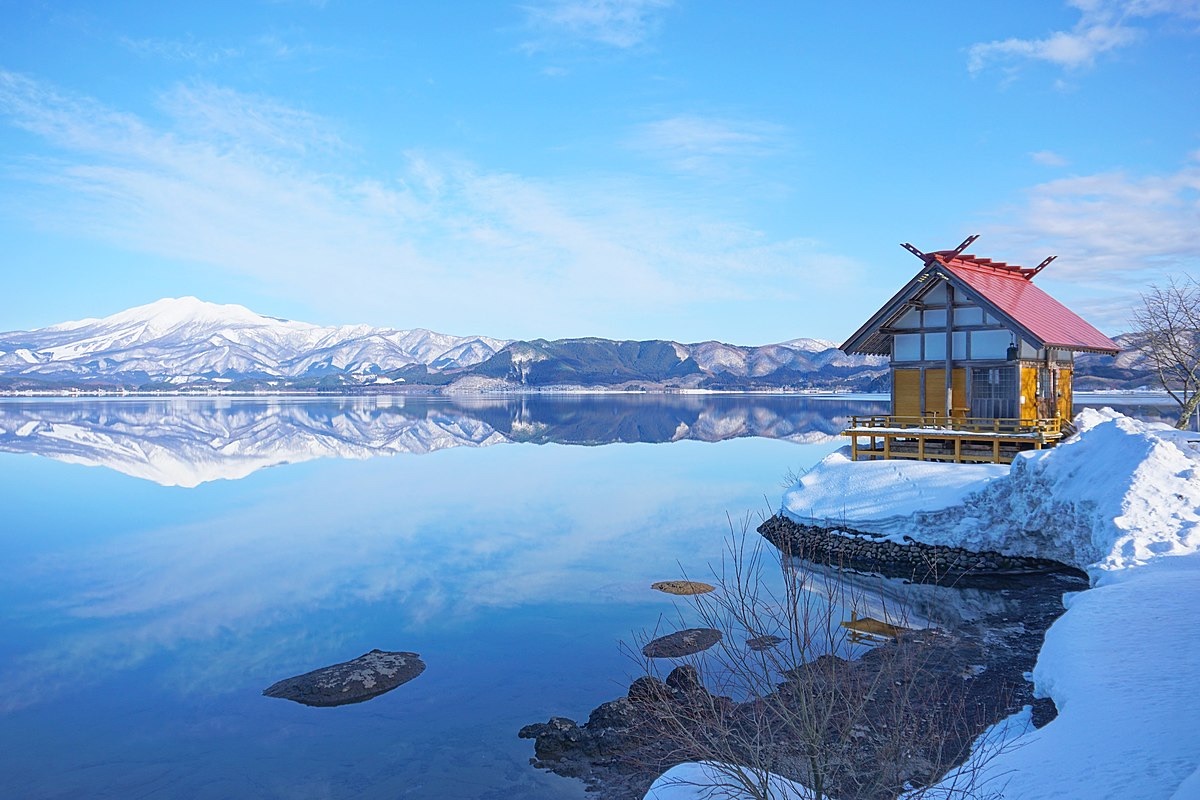
Image credit: 掬茶 on Wikimedia Commons
At Lake Tazawa, you can’t miss out on visiting the iconic Statue of Tatsuko, a golden statue rumoured to be built in memory of a young maiden named Tatsuko.
According to Japanese folklore, Tatsuko drank water from a magical spring in hopes of preserving her beauty for life. However, she accidentally drank too much and turned into the guardian dragon of Lake Tawaza.
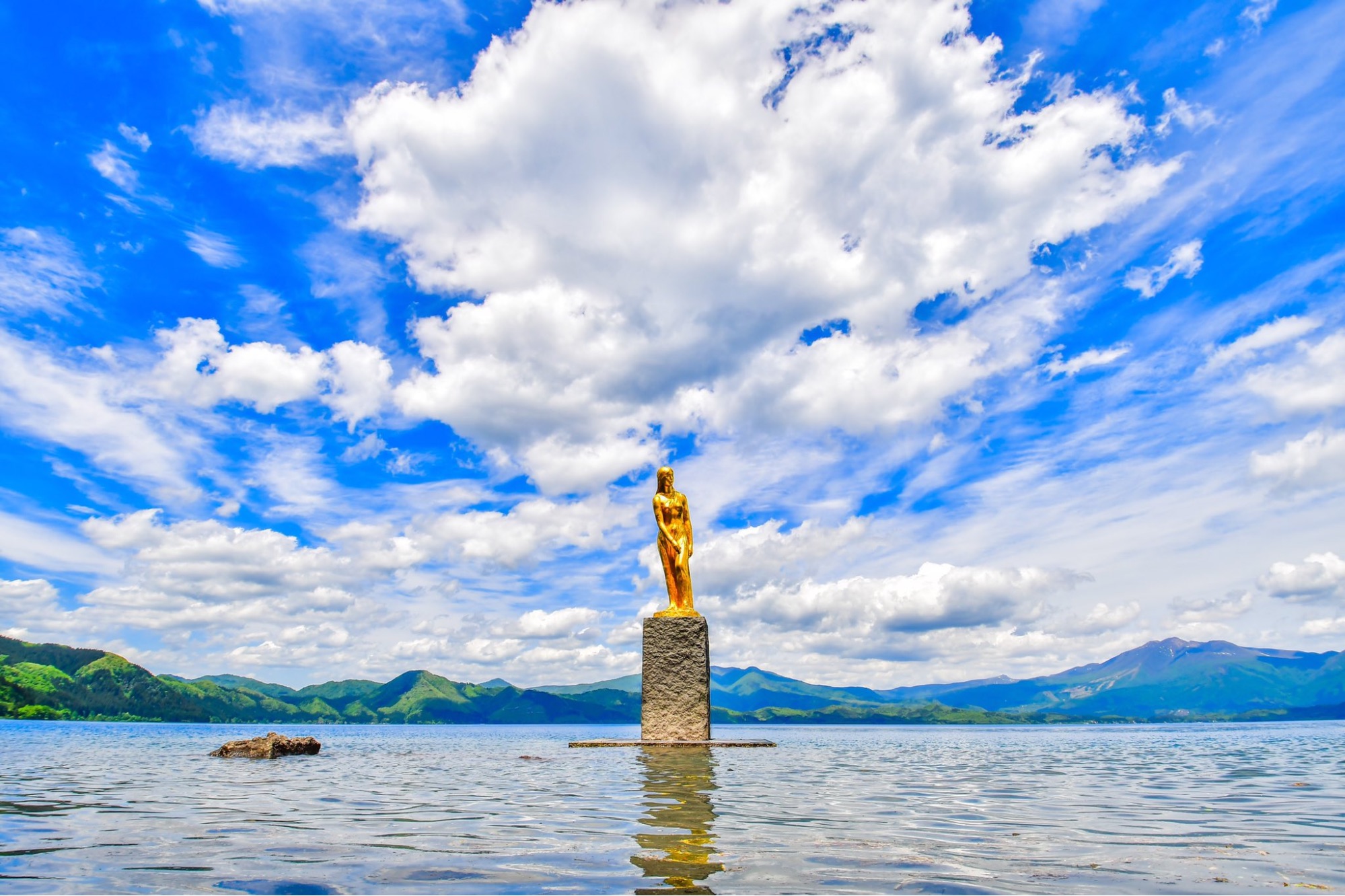
Image credit: @MoonysHouse
The Statue of Tatsuko, as well as Lake Tawaza, was featured in the background of a romantic scene in the 2009 Korean drama Iris.
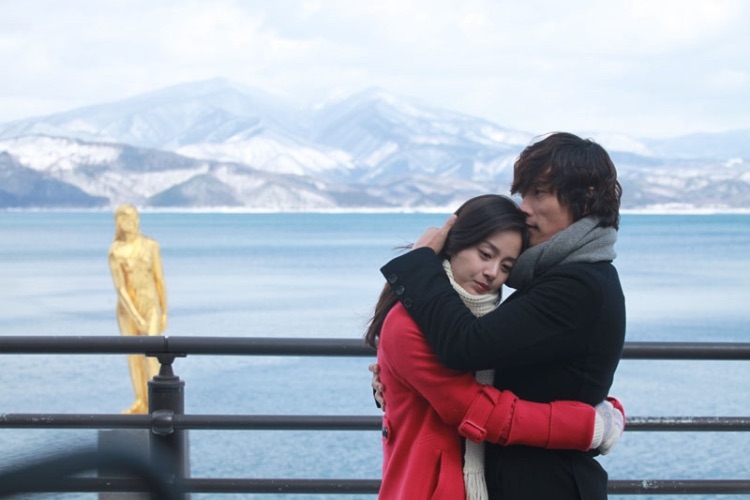
Image credit: AsianWiki
Address: Nishikicho Saimyoji, Semboku City, 014-0511 Akita
9. Lake Biwa
Lake Biwa (琵琶湖), the largest freshwater lake in Japan, is known for its beautiful blue colour. In fact, Lake Biwa’s attractive blue hue inspired the Biwako Blue Project, where locals infuse dishes ranging from curry rice to pastries with a blue pigment derived from butterfly pea flowers.
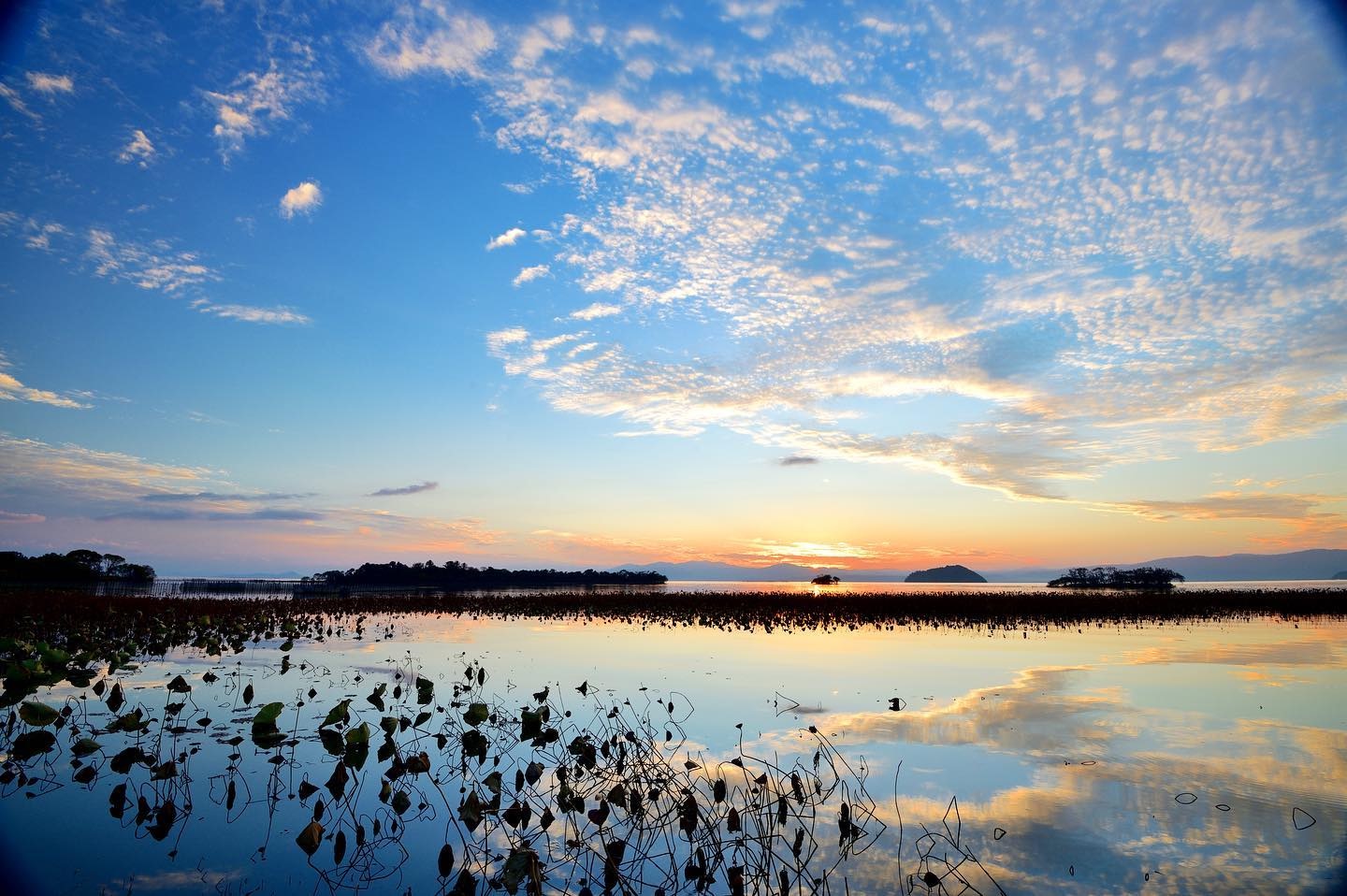
Image credit: @yucky_tah
Lake Biwa also famously houses the torii gates of Shirahige Shrine (白鬚神社) in the middle of its waters.
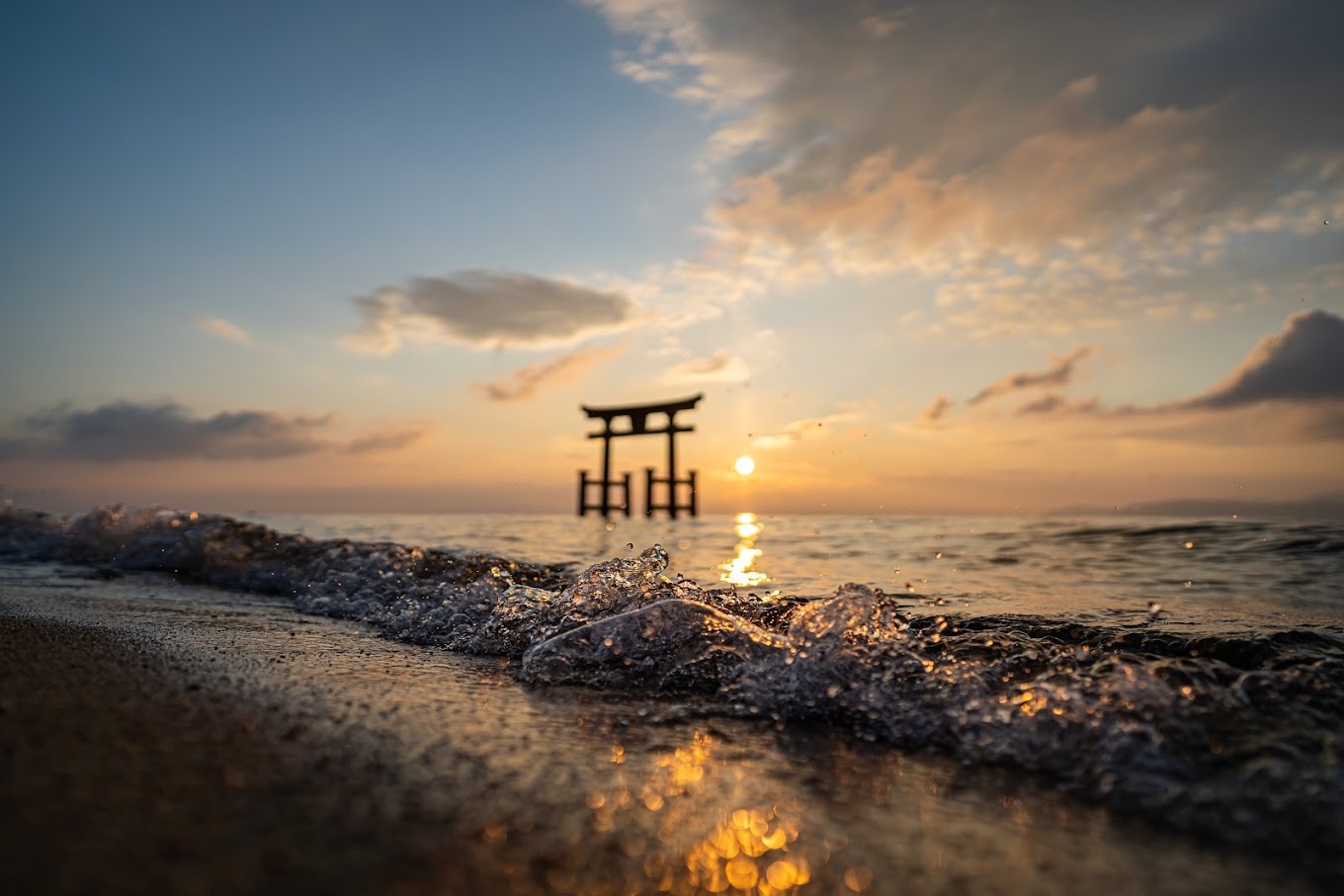
Image credit: fivehundredking
Additionally, Lake Biwa is a popular spot for bass fishing.
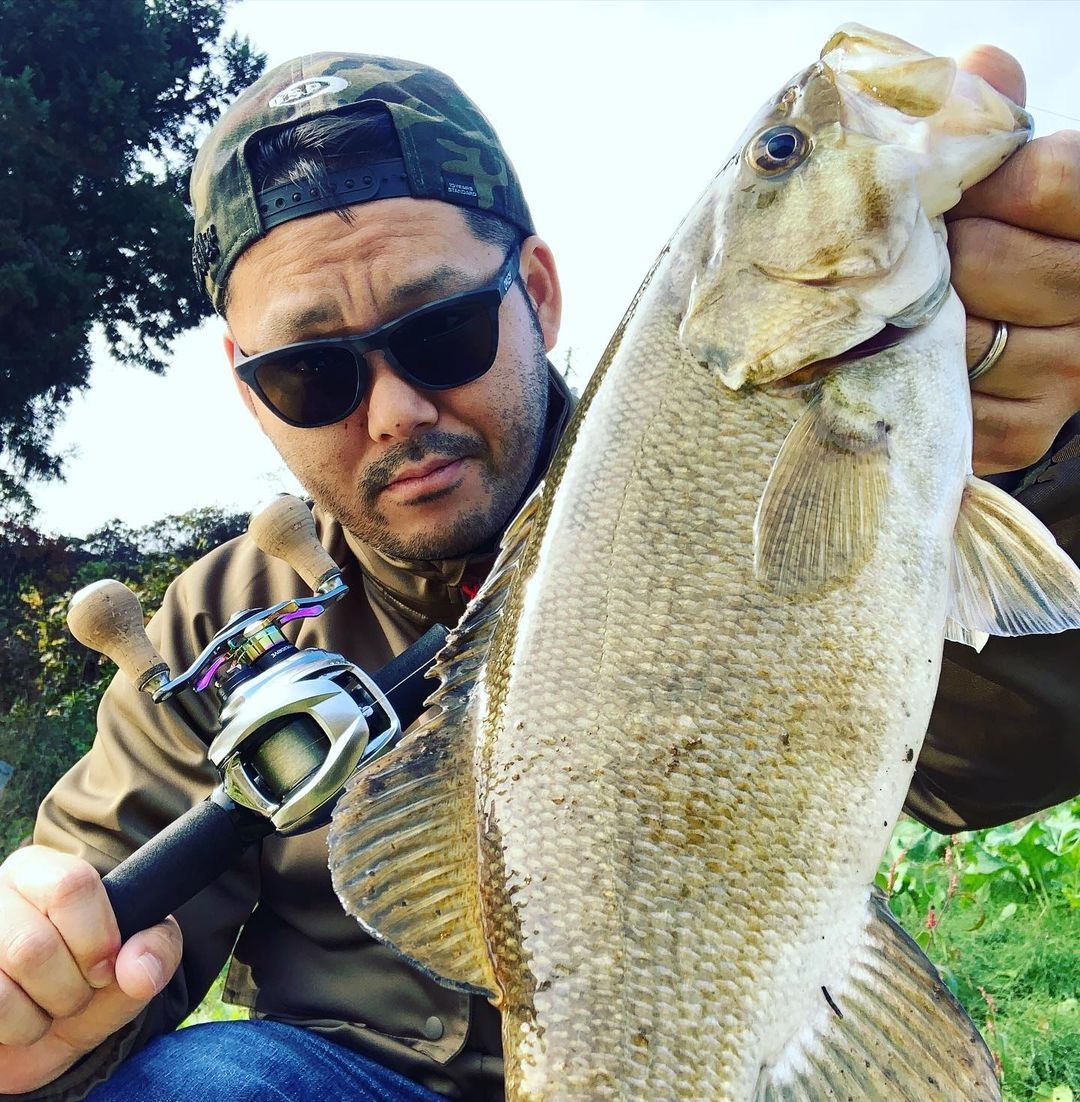
Image credit: @ak8uk
That’s because the largest bass ever caught worldwide was fished from the waters of Lake Biwa, as certified by the International Game Fish Association (IGFA).
Located near Lake Biwa is the Biwako Flower Fountain, a fixture that consists of 66 nozzles that spray water up to 40m high. Visit after sunset to see the jets of water lit up in a variety of colours to create a fancy nightscape.
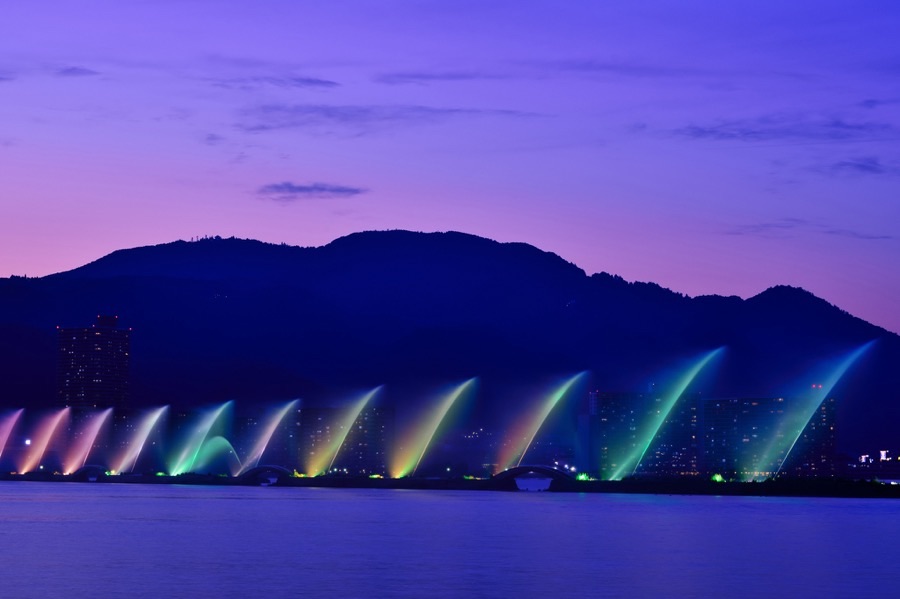
Image credit: Biwako Visitors Bureau
Address: 5-1-1 Hamaotsu, Otsu City, 520-0047 Shiga
10. Lake Hyo
Last but not least, Lake Hyō (瓢湖) is a manmade lake that’s registered in the Ramsar Convention, which is an international agreement that protects wetlands deemed vital to the survival of wildlife.
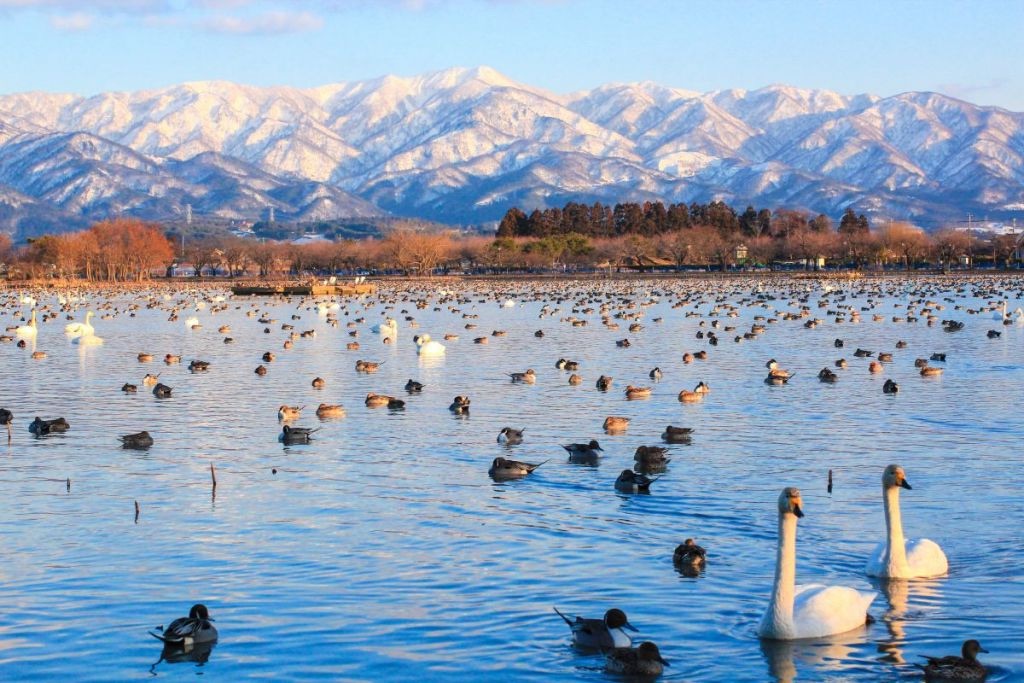
Image credit: Niigata Prefectural Tourist Association
Lake Hyō is famous for being home to approximately 6000 migratory swans from October to March each year. The swans are fed by the lake’s management staff every 9am, 11am, and 3pm, but visitors interested in feeding the swans can buy a bag of feed for ¥100 (~USD0.72).
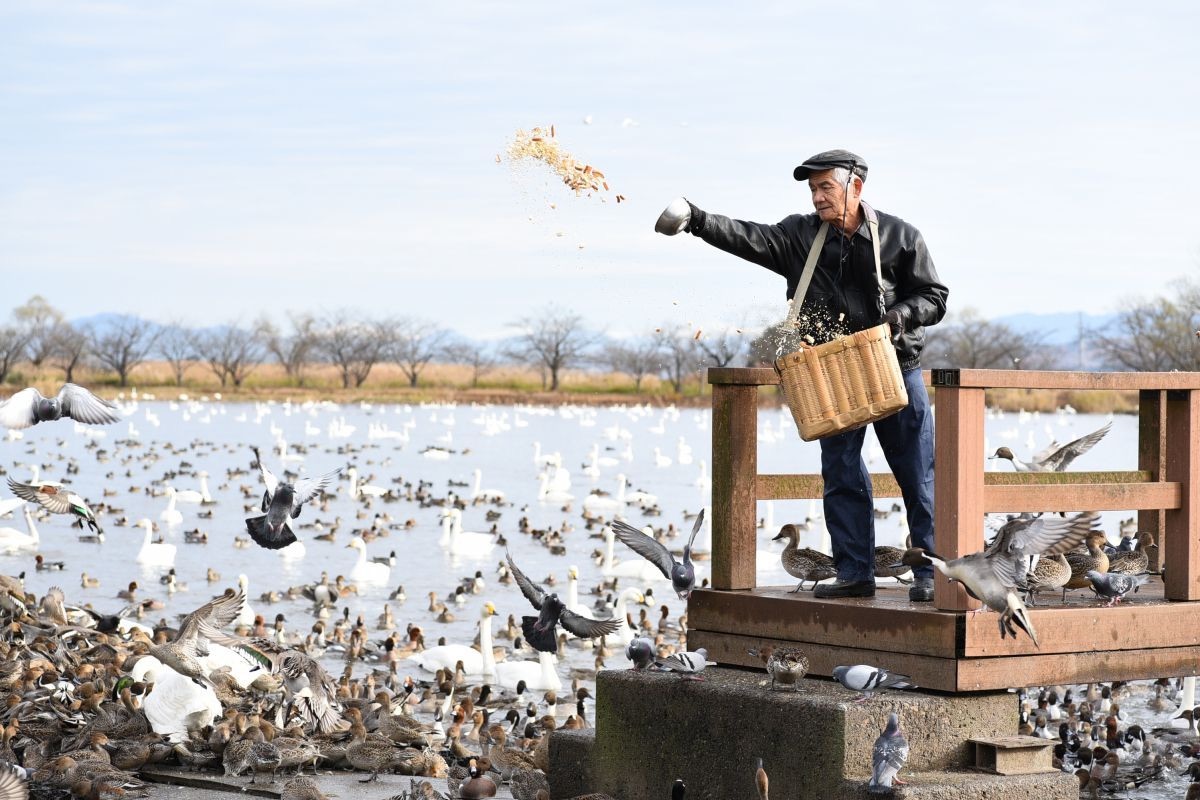
Image credit: Niigata Prefecture Tourism Association
Address: 313-1 Suibara, Agano, Niigata
The most beautiful lakes in Japan
Everyone deserves a well-rested break once in a while, and basking in the serenity of nature is a sure-fire way to soothe away your fatigue. Now that we’ve provided 10 must-visit lakes in Japan to consider visiting, it’s up to you to decide where your legs take you.
Also check out:
- 10 things to do in Nikko City
- Traffic rules for cycling in Japan
- Scenic ocean drive on Tsunoshima Bridge
- 10 Mountains in Japan that rival Mount Fuji
- 10 unusual shrines that aren’t too tourist-y
Cover image adapted from: @fujikawaguchikotourism, 掬茶 on Wikimedia Commons, Yamanashi Tourism Organization and Niigata Prefectural Tourist Association
